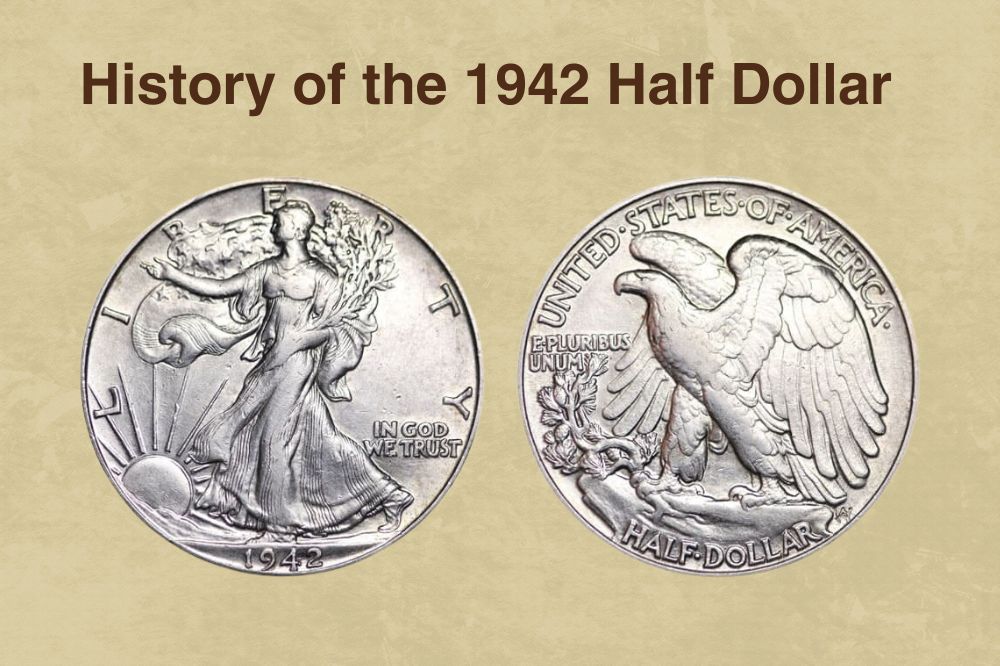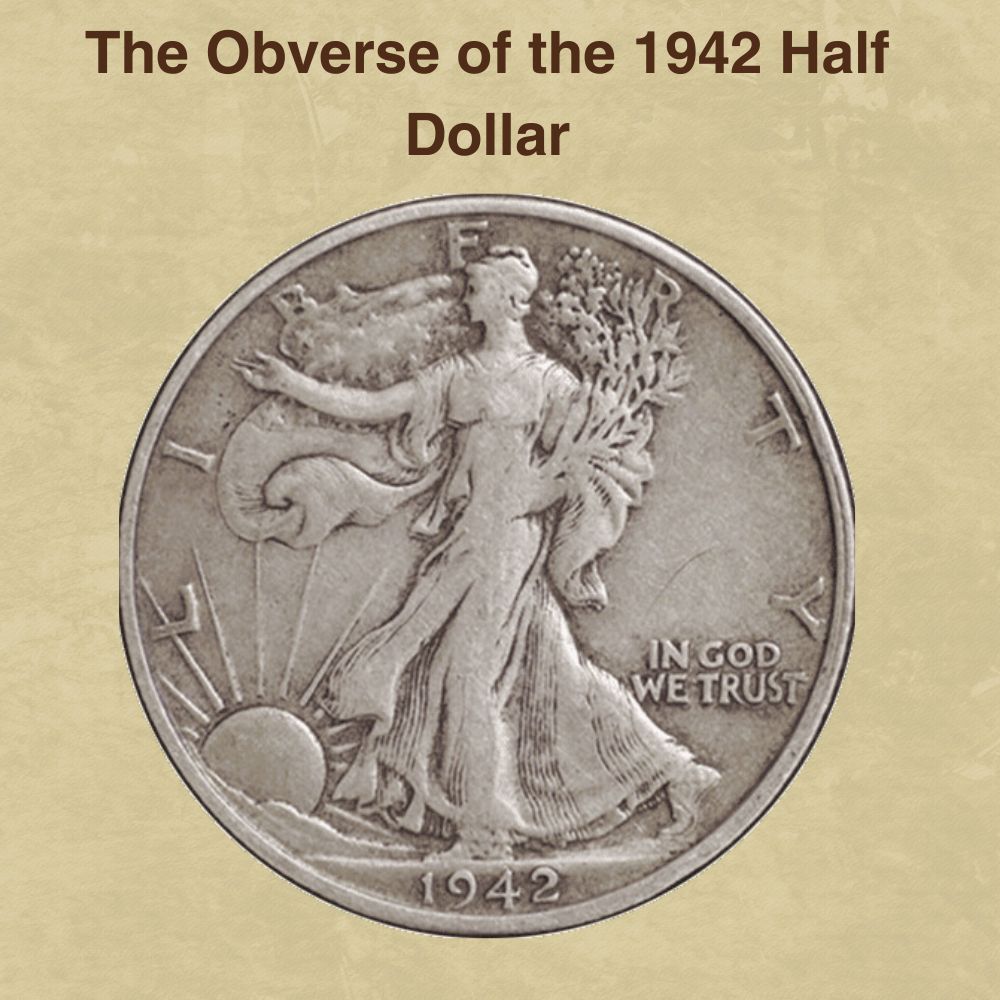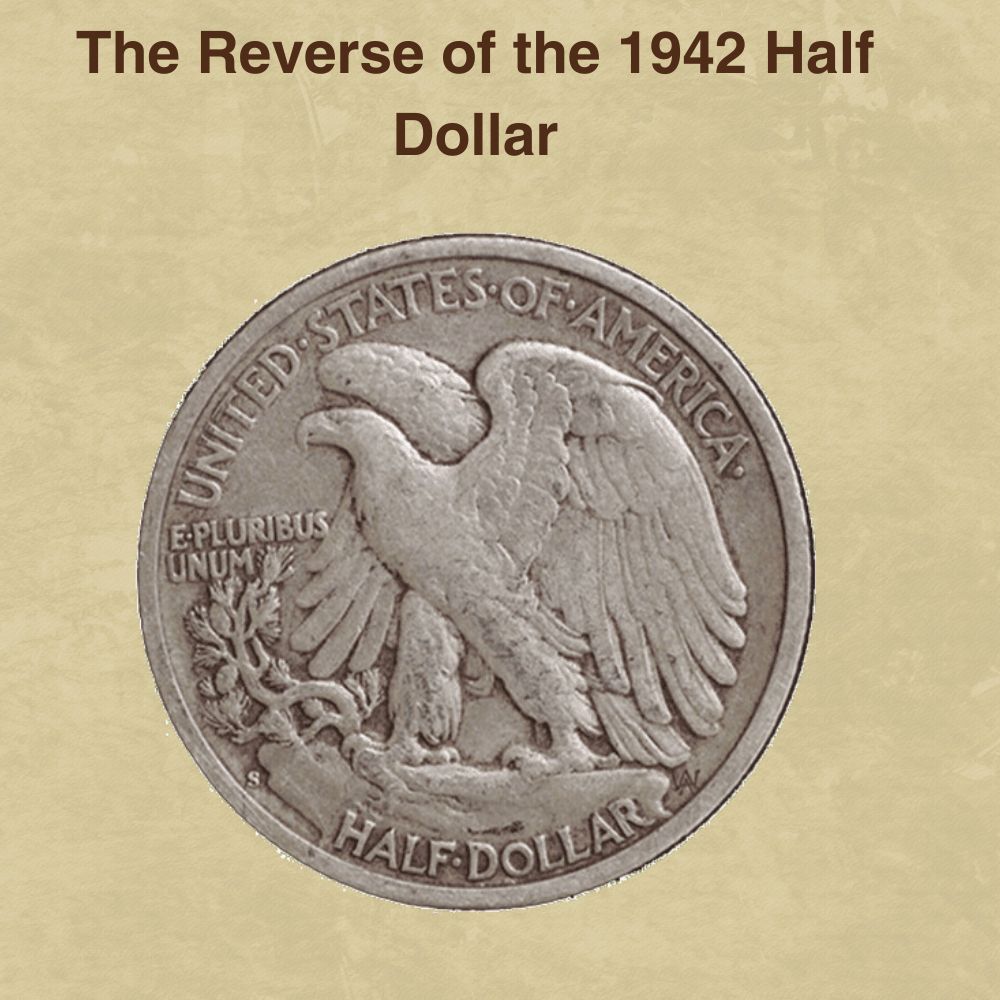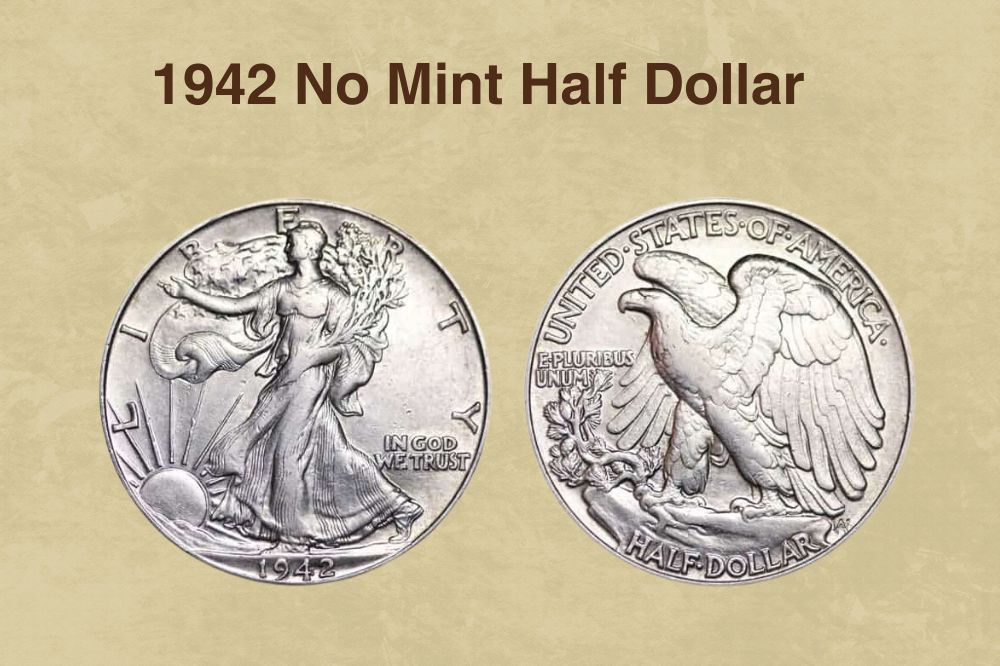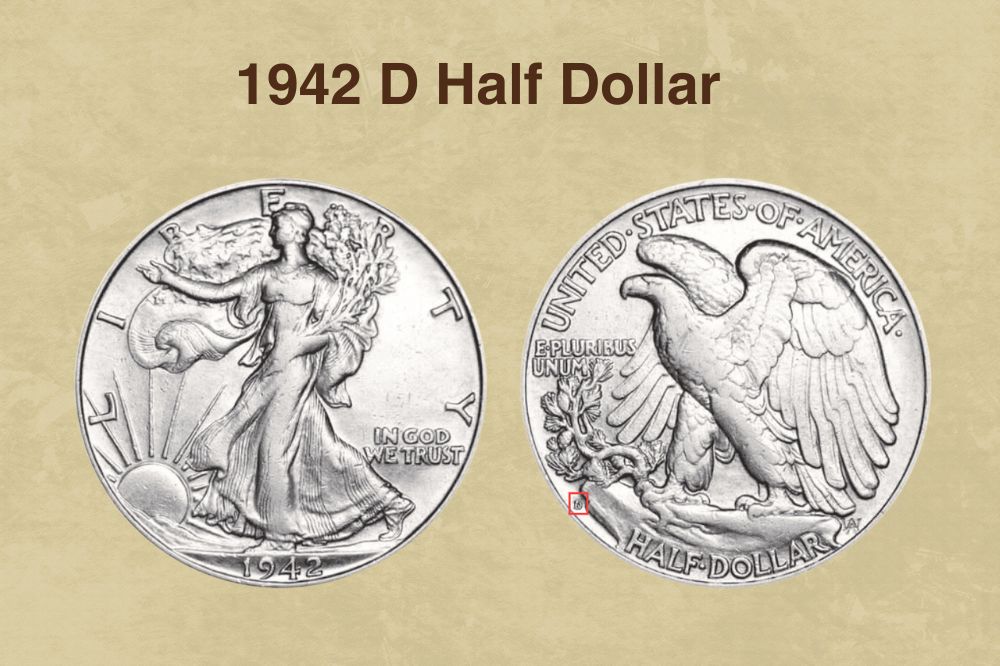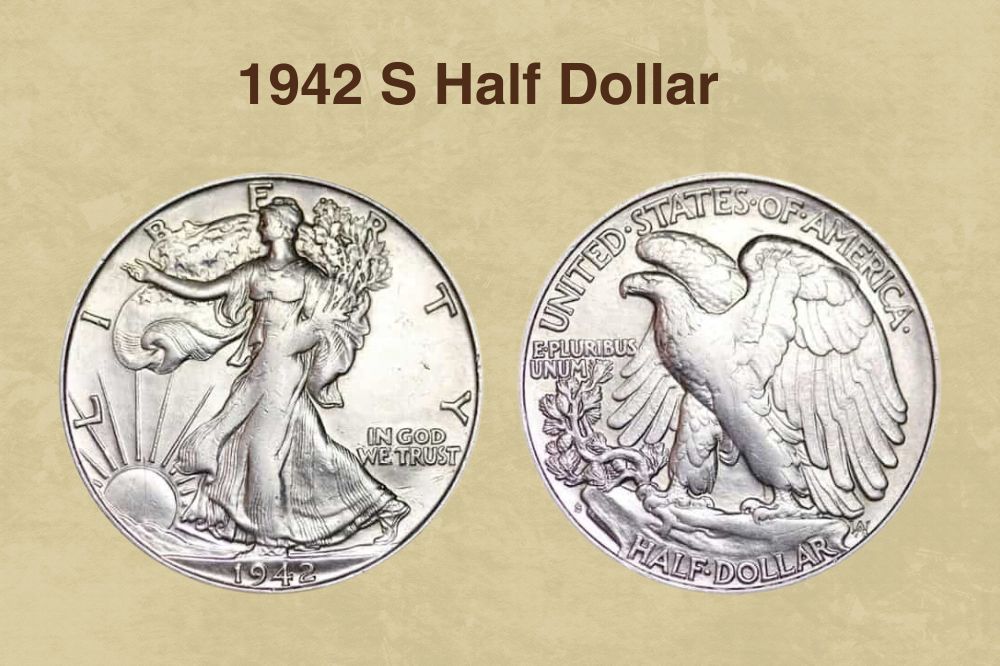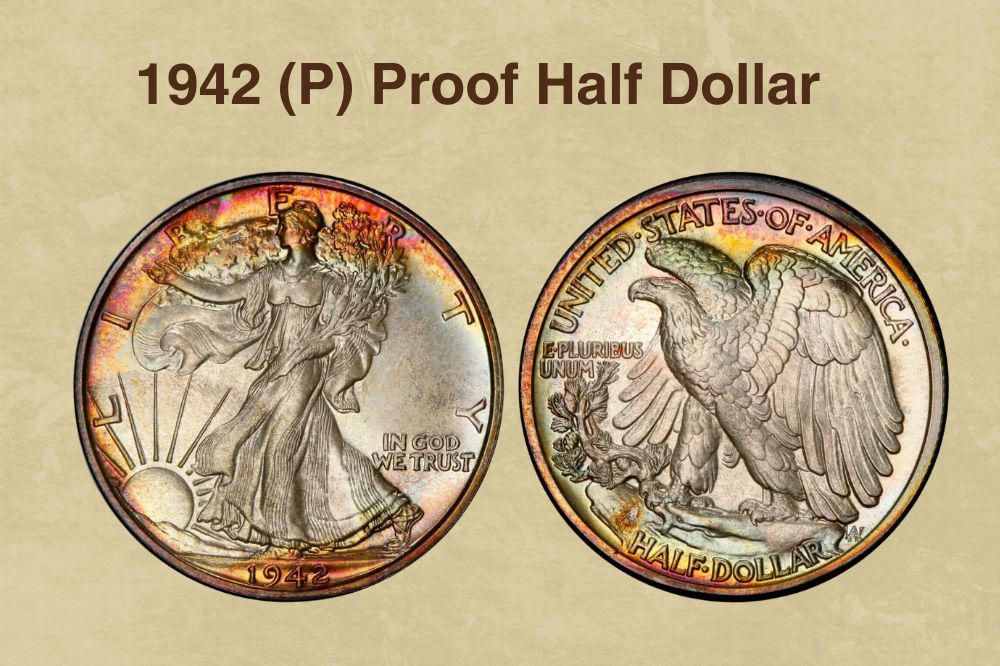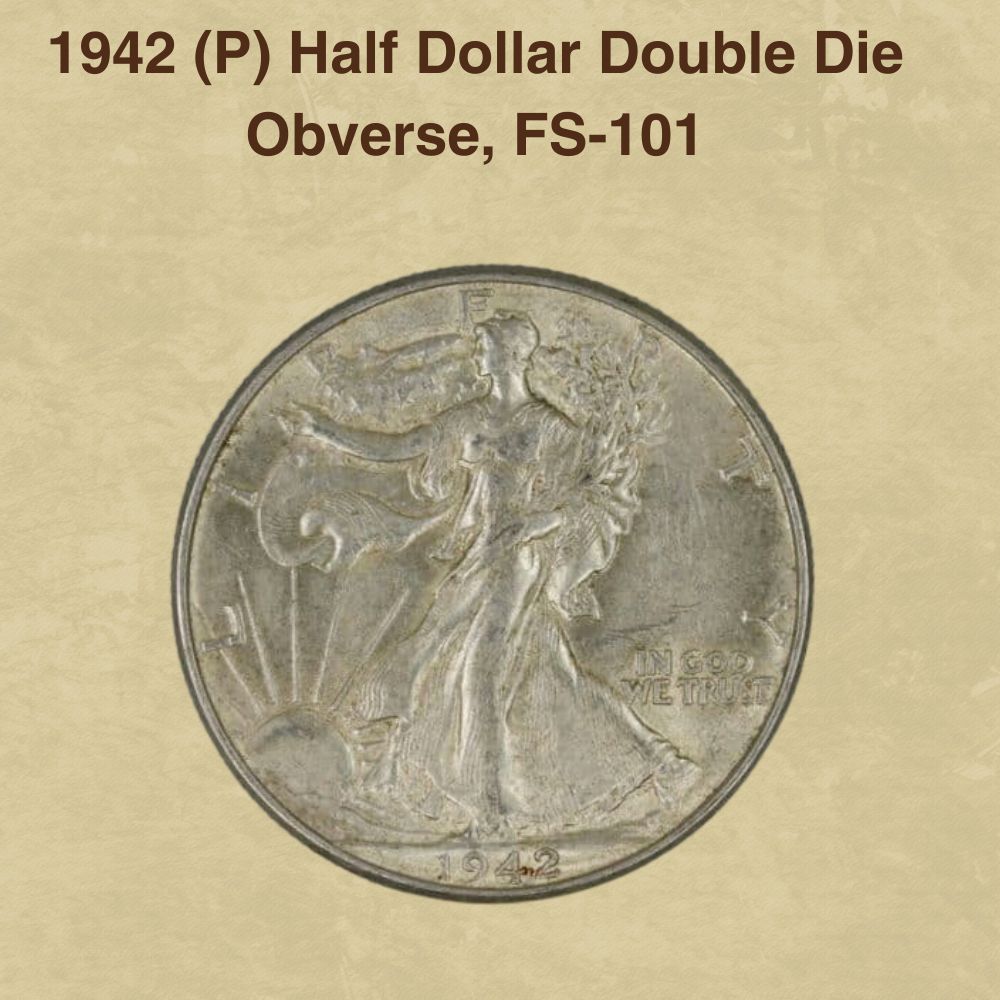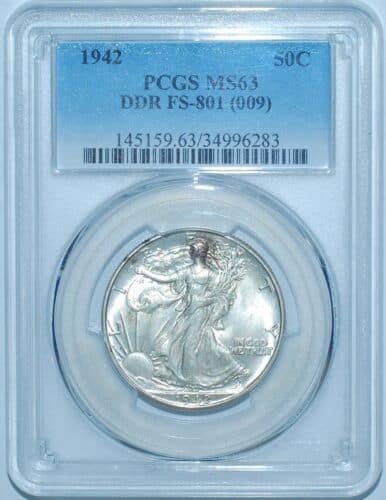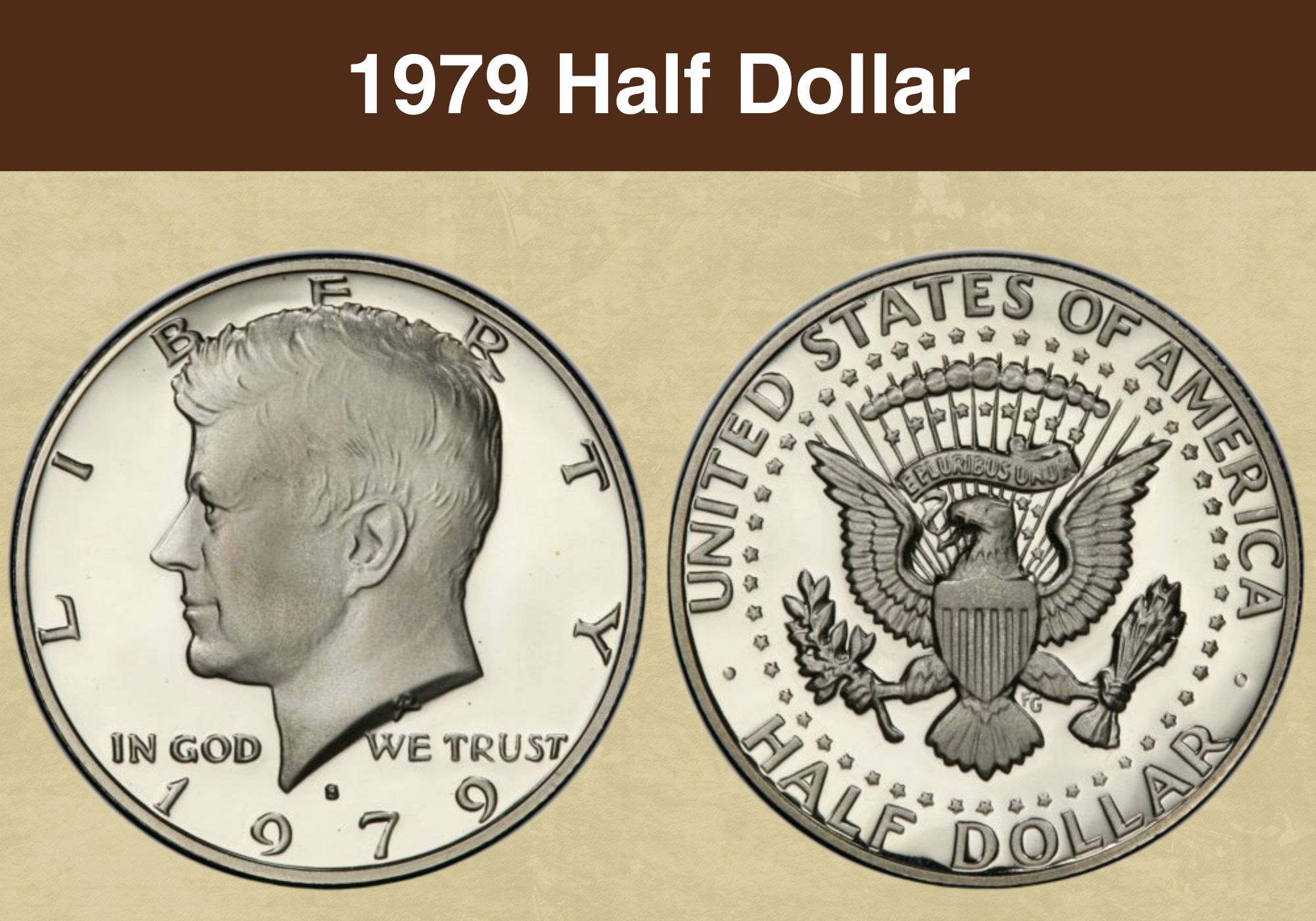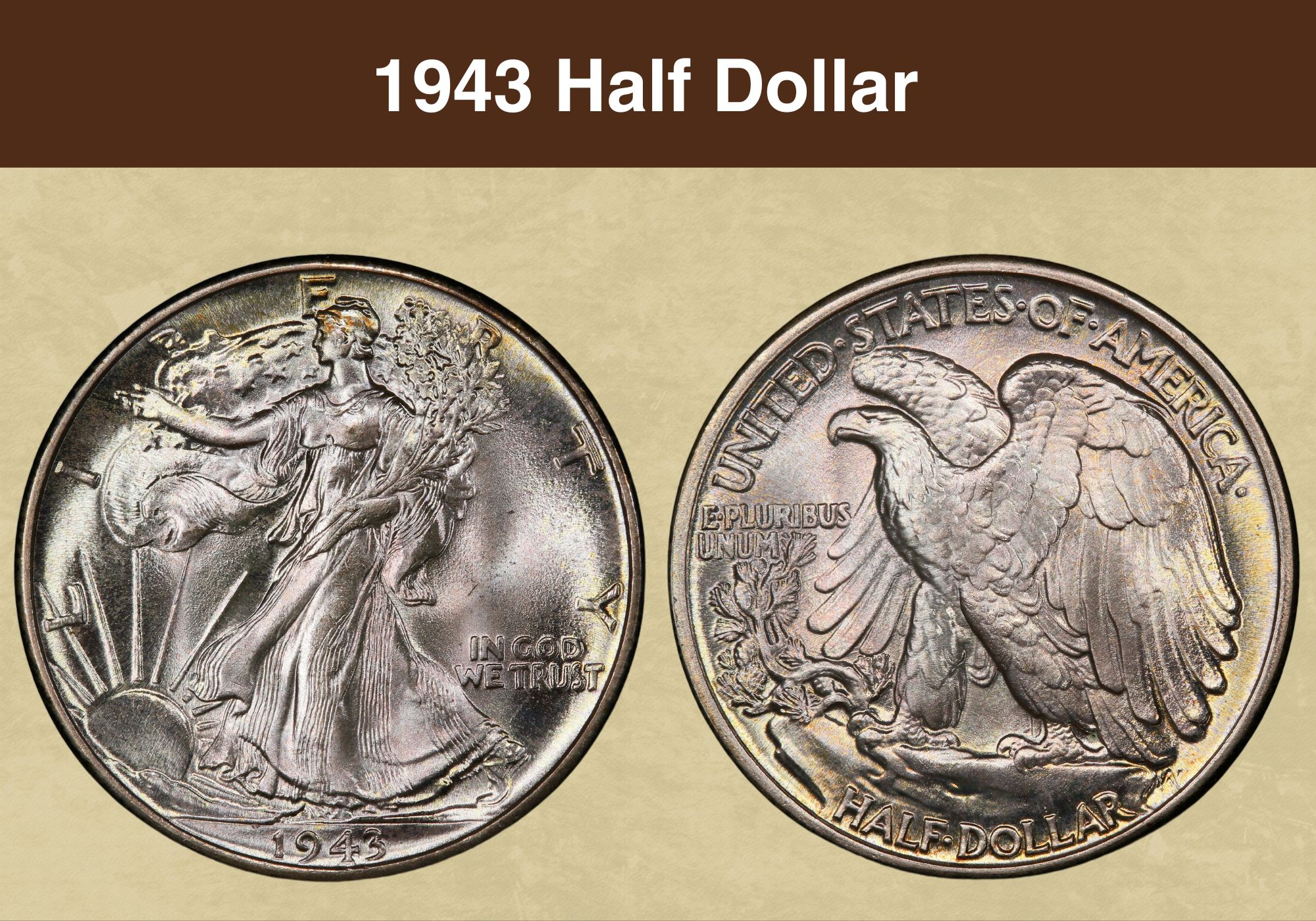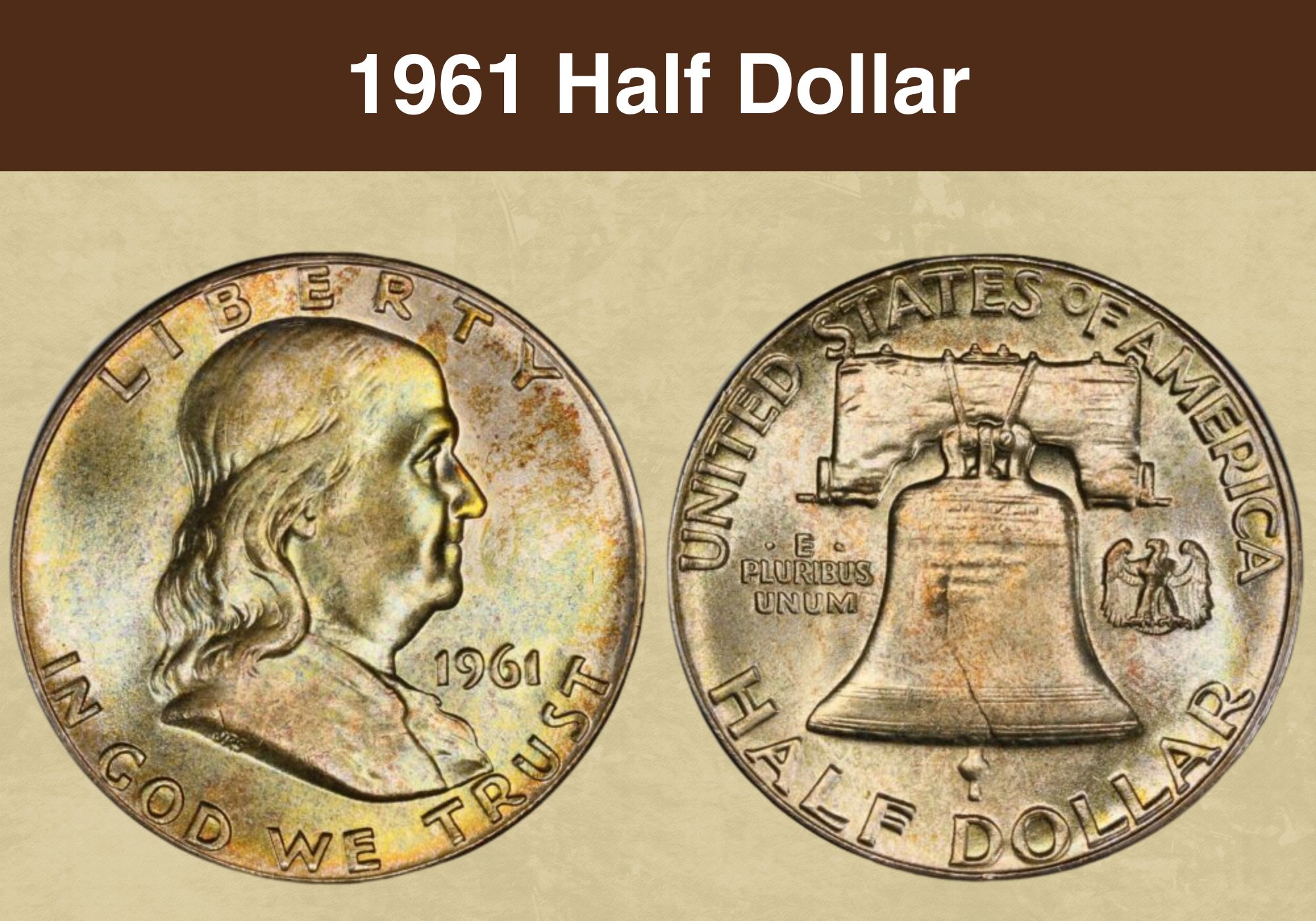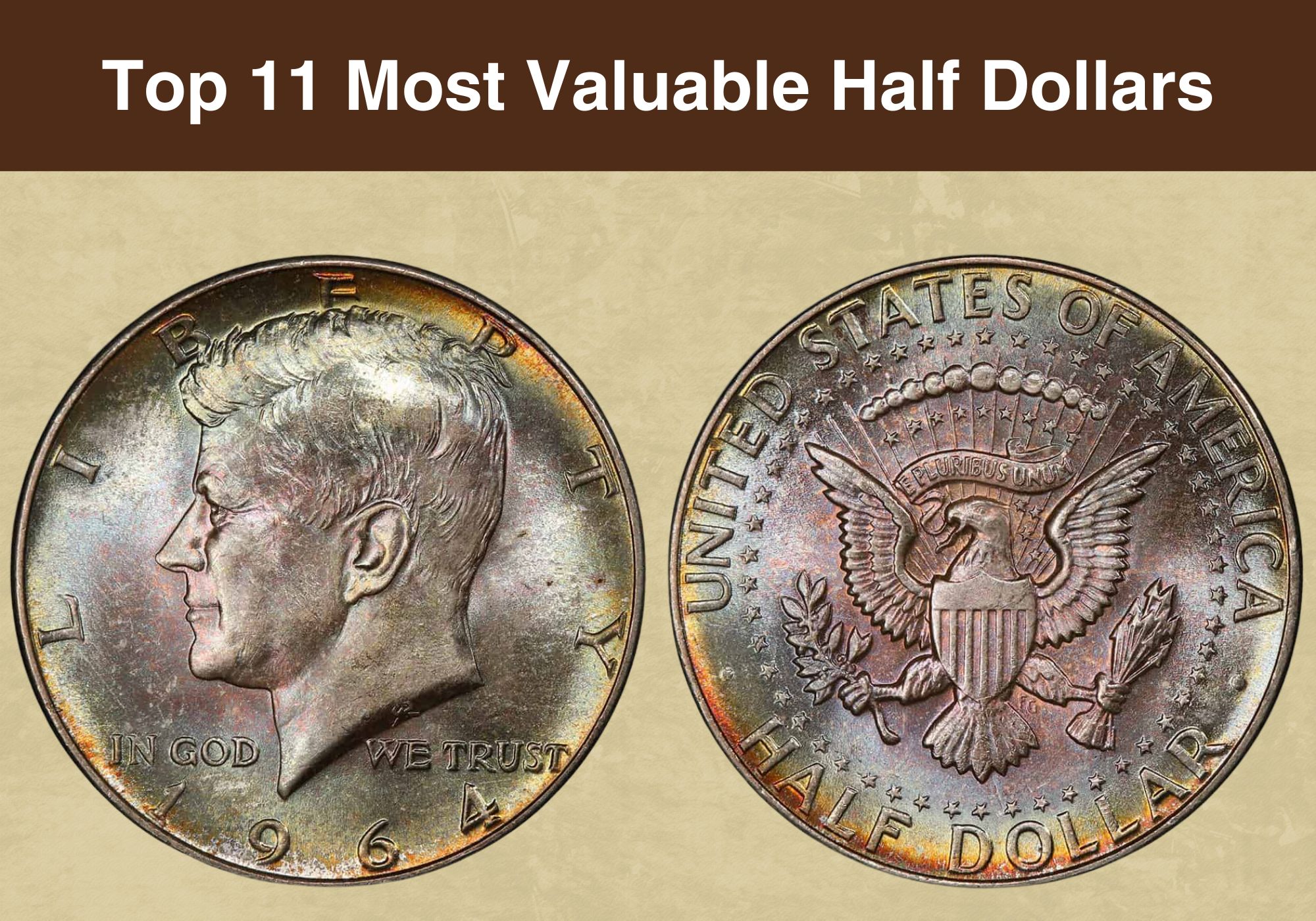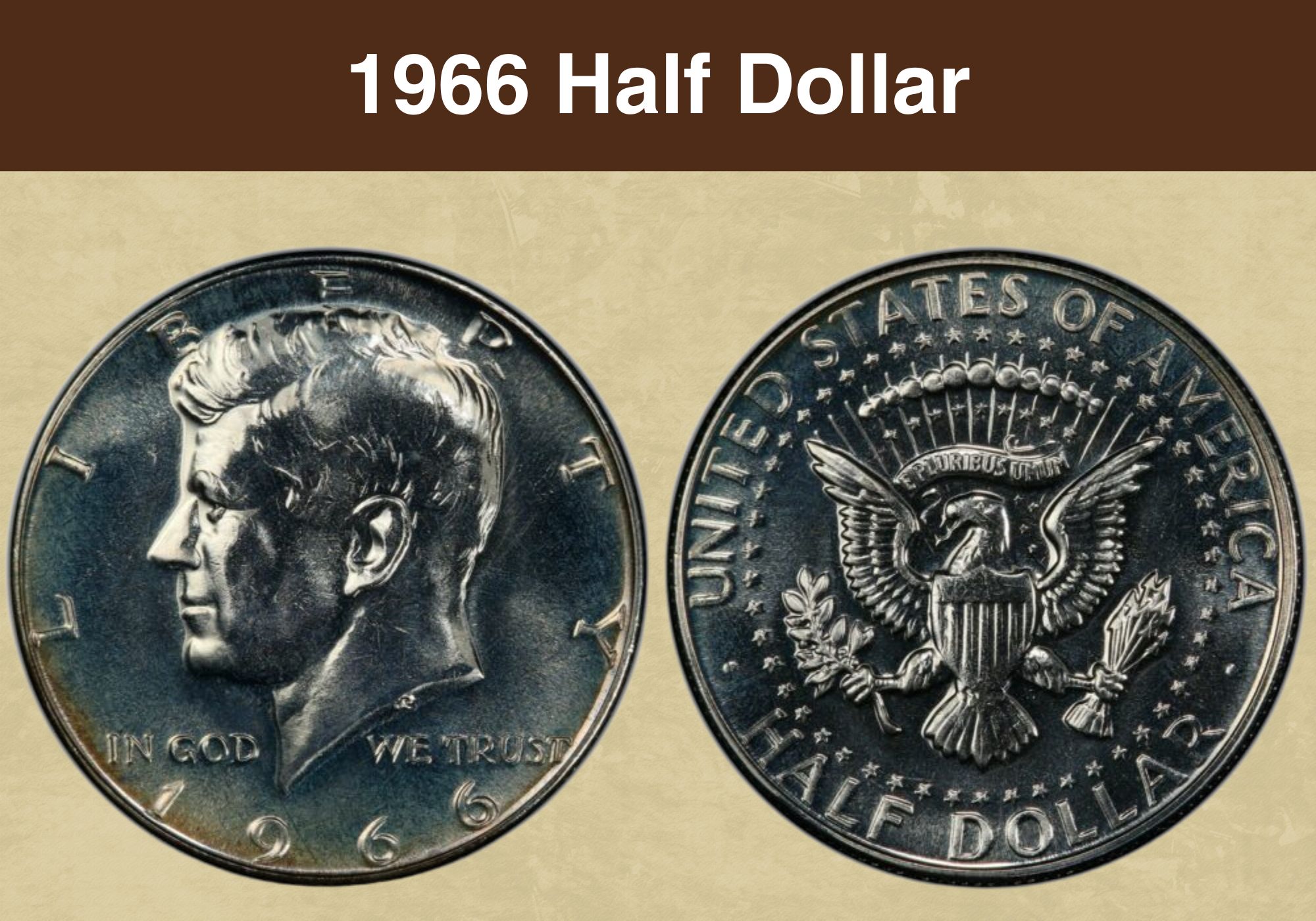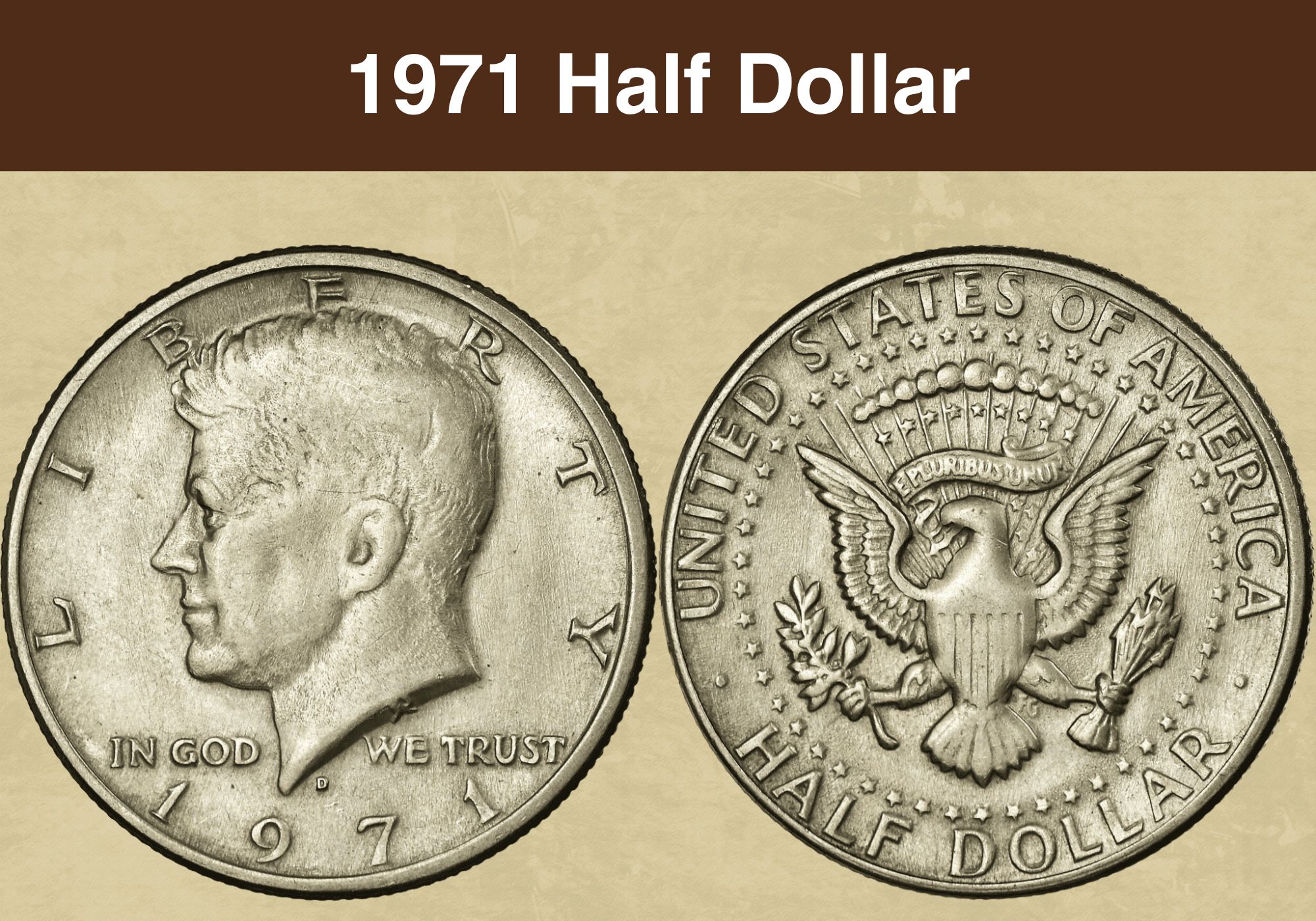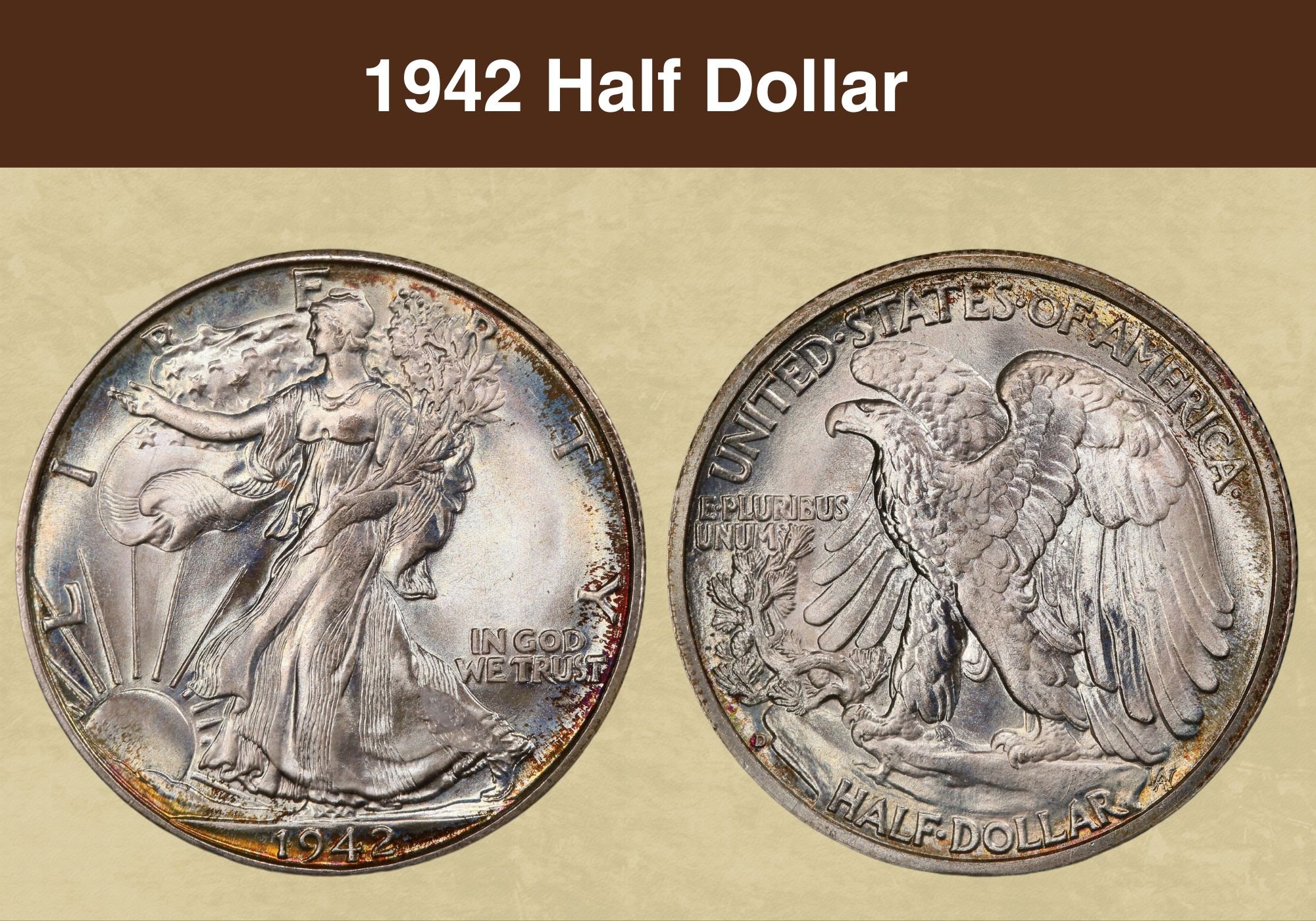
Coin Value Contents Table
- 1942 Half Dollar Value Chart
- History of the 1942 Half Dollar
- Features of the 1942 Half Dollar
- 1942 Half Dollar Grading
- 1942 Half Dollar Value Guides
- 1942 No Mint Half Dollar Value
- 1942 D Half Dollar Value
- 1942 S Half Dollar Value
- 1942 (P) Proof Half Dollar Value
- Rare 1942 Half Dollar Error List
- Where to Sell Your 1942 Half Dollar ?
- FAQs
The half dollar struck in 1942 is one of the series known as Walking Liberty half dollars. They get their name from the image on the obverse.
But just how much is one of these coins worth? That’s what we’re going to find out!
We’ll explore the 1942 half dollar value, and we’ll look at what difference condition and mint mark makes to it. We’ll check out some error coins too. And we’ll learn about the history and key features of this attractive coin.
So if you’re ready, let’s get started!
1942 Half Dollar Value Chart |
||||
| Mint mark | XF45 | MS60 | MS65 | MS67 |
| 1942 (P) No Mint Half Dollar Value | $24 | $55 | $165 | $675 |
| 1942 D Half Dollar Value | $24 | $55 | $190 | $900 |
| 1942 S Half Dollar Value | $24 | $55 | $335 | $42,500 |
| PR50+ | PR60 | PR65 | PR69 | |
| 1942 (P) Proof Half Dollar Value | $165 | $325 | $625
Cameo: $4,500 |
$60,000 |
History of the 1942 Half Dollar
1942 was the 24th year of production of the coins known as “Walking Liberty” half dollars. They took their name from the image on their obverse, an elegant full-length portrait of Lady Liberty striding forth.
Their creation was actually the result of a misconception by a man called Robert D. Woolley. Woolley was the director of the US Mint in 1919. He wrongly believed that he was legally required to replace coin designs after they had been in place for 25 years.
In fact, the legislation merely gave the Mint the authority to do so without seeking Congressional approval.
Woolley duly commissioned replacement designs for dimes, quarters and half dollars, all of which were nearing the supposed 25-year limit. But Woolley wasn’t satisfied with the designs offered by the Mint engravers, and a competition was launched to find alternatives.
The winning design for the half dollar was created by Adolph A. Weinman. Weinman was a renowned sculptor and engraver, and also won the competition to design the dime.
But while the Walking Liberty half dollar is undoubtedly a beautiful coin, it proved difficult to strike well. Coin production was halted early on, when vending machine manufacturers reported problems with their use.
Weinman responded by suggesting a minor change, but the problems continued. So Charles E. Barber, the Mint’s Chief Engraver, took the matter in hand and suggested more radical revisions.
He proposed shrinking Weinman’s design to leave a larger blank area around the edge, and adding a beaded border. But a worried Weinman felt that the changes ruined the visual appeal of his design.
Adam M. Joyce, superintendent of the Philadelphia Mint, believed the vending machine problem could be solved with less dramatic changes. He suggested reducing the relief of Weinman’s design, but also preparing the planchets better and strengthening the strike.
Joyce’s opinion won out, and working dies were crafted on that basis. But while the Walking Liberty half dollars were popular with the public, the production problems continued.
Many of the coins, particularly those struck at the San Francisco Mint facility are weakly struck. So perhaps Barber (who had designed the coins the new half dollars were replacing) was vindicated in the end.
The ongoing production problems were probably behind the decision to change the design in 1948. That year saw the Walking Liberty replaced by the Franklin half dollar.
Also read: 13 Most Valuable Franklin Half Dollars Worth Money
Features of the 1942 Half Dollar
The Obverse of the 1942 Half Dollar
The full-length image of Lady Liberty dominates the obverse of the 1942 half dollar. She strides towards the sunrise, wrapped in the US flag. In her left hand she carries an olive branch, symbolizing peace, while her right hand is outstretched.
The large image meant that there was little space left for text. Various options were considered for the positioning of the word “LIBERTY”. Weinman had originally proposed that this should appear to the right of Liberty’s figure, allowing her to take up the whole height of the coin.
In the end, however, it was inscribed above her head. But Liberty takes precedence, with the bottoms of the letters “B”, “E” and “R” disappearing behind her head and flag.
The motto “IN GOD WE TRUST” is tucked away behind Liberty’s right leg, while the date is at the bottom of the coin.
Half dollars minted in San Francisco or Denver are identifiable by the “S” or “D” mint marks respectively. These had originally been positioned just below the date.
But that changed in 1917, and 1942 half dollars have their mint marks on the reverse.
The Reverse of the 1942 Half Dollar
The reverse of the 1942 dollar depicts an eagle on a rocky cliff. Its wings are raised, and one leg is placed in front of the other. A leafy branch at the cliff edge has been identified as mountain pine. Like the eagle, it’s an emblem of the USA.
The artist was again Adolph Weinman and, like the obverse, the artistic beauty of the design was generally admired. There was, however, some minor controversy over whether the bald eagle had been depicted accurately. Some complained that the feathering on the bird’s legs was too abundant.
The words “E PLURIBUS UNUM” appear to the left of the eagle, as the coin is viewed. The Latin motto appears on all US coins and means “From the many, one”. It refers to the creation of the USA from the individual states.
The country name follows the curve of the top edge of the coin. Along the lower edge is inscribed the denomination. And just along from the “R” of “DOLLAR” are the initials “AW”, for Adolph Weinman.
Other Features of the 1942 Half Dollar
The Walking Liberty half dollar measures 30 millimeters across and weighs 12.5 grams. Although generally referred to as a silver coin, it contains ten per cent copper too.
The edge is reeded, meaning there are a series of grooves that run perpendicular to the coin faces. The marks are made by the collar, the device that holds the planchet in place while it’s struck.
Reeded edges first appeared in the eighteenth century and were used to detect fraud. The marks meant that it was easy to see if a coin had been “clipped” – i.e. whether slivers of precious metal had been removed from the edges.
This YouTube video from Lakehouse Beach looks at a collection of Walking Liberty half dollars through the years.
Also read: 13 Most Valuable Kennedy Half Dollar Worth Money
1942 Half Dollar Grading
| # | Grade |
|---|---|
| 1 | Basal State-1 |
| 2 | Fair |
| 3 | Very Fair |
| 4, 5, 6 | Good |
| 7, 8, 10 | Very Good |
| 12, 15 | Fine |
| 20, 30 | Very Fine |
| 40 | Extremely Fine |
| 50 | About Uncirculated |
| 60 | Mint State |
| 65 | Mint State |
| 70 | Mint State |
Please check our grading guides to know your coin scale, It’s the necessary step to know the exact value of your coin.
Check out now: How to Grade Walking Liberty Half Dollar?
1942 Half Dollar Value Guides
1942 No Mint Half Dollar Value
Philadelphia half dollars can be distinguished from others by the absence of a mint mark. Look on the reverse, just to the left of the rocky outcrop. If there’s no “S” or “D”, your coin was struck at the Philadelphia Mint facility.
Almost 48 million half dollars were struck there in 1942. But many were melted down in later years. Today, it’s estimated that only around 2.5 million remain at all grades.
About one in ten of those are uncirculated coins graded MS60 and above (the MS stands for “mint state”). And perhaps 62,500 are “gem” quality coins – those graded at least MS65 out of 70.
These are attractive and desirable coins, and even circulated examples are worth money. A 1942 Philadelphia half dollar graded XF45 (“extremely fine”) is valued by independent coin graders the PCGS at around $24.
A mint state example is worth at least $45, while a gem quality example is worth at least $155.
Values for the finest coins are considerably higher. The PCGS has certified fourteen 1942 no mint mark half dollars at MS68. Those are each valued at $21,000.
And the cream of the crop is a single coin graded MS68+. That last sold at auction in 2021, making $78,000. Today, the PCGS rounds up the value to $80,000.
1942 D Half Dollar Value
The Denver facility produced far fewer half dollars than Philadelphia in 1942. Just under 11 million came out of the coin presses there. And only 550,000 are estimated to survive today.
Of those, around 80,000 are believed to be graded MS60 and above. And 24,000 are MS65 or finer.
As ever, the better the condition of the coin, the higher the value. An example graded XF45 is worth around $24, the same as the Philadelphia equivalent. And values for no mint mark and D 1942 half dollars remain similar up to MS62.
But for finer coins, the Denver mintmark carries a significant premium. An example graded MS63 is worth around $100, compared to $65 for a Philadelphia coin at the same grade. At MS65, the value is $190 ($155 for Philadelphia) and at MS67, it’s $900 ($800 for Philadelphia).
The finest examples known to exist are ten coins graded MS68. The PCGS values those at $45,000 apiece.
1942 S Half Dollar Value
The San Francisco mint facility struck 12.71 million half dollars in 1942. Weak strikes were a recurring issue here, with most coins suffering a lack of detail on Liberty’s left hand.
Around 600,000 coins are believed to survive, with about 50,000 of those in mint state. Examples graded MS65 and above are estimated to number around 7,500.
In circulated condition, values are roughly the same as for half dollars from the other Mint facilities. But in mint state, San Francisco coins carry a premium.
An example graded MS60 is valued by the PCGS at $55, $10 more than the Denver or Philadelphia equivalents. And the rarity of gem examples makes them significantly more valuable.
A 1942 San Francisco half dollar graded MS65 is worth around $335. That rises to $825 at MS66 and $42,500 at MS67.
The finest 1942-S half dollars are graded half a point higher, at MS67+. The PCGS has certified three coins at that level, with one last selling in 2021 for $60,000. Today, the PCGS estimates that the value has increased to $70,000.
1942 (P) Proof Half Dollar Value
The Philadelphia Mint facility struck both regular and proof half dollars. Only 21,120 of these were minted, and they were aimed at collectors.
Proof 1942 half dollars come in two levels – standard and cameos. The latter are coins that have an attractive contrast between reflective fields (the flat parts of the coin) and frosted devices.
The PCGS has certified standard proofs at grades between 45 and 69. At the lower end, the value is around $150. But the sole PR69 1942 proof half dollar is worth an eye-watering $60,000.
The range for cameos is smaller, with PCGS-certified examples between PR62 and PR67. At the lower level the value is $750. At the top end, it’s $27,500.
Also read: 11 Most Valuable Half Dollars In Circulation
Rare 1942 Half Dollar Error List
1942 (P) Half Dollar Double Die Obverse, FS-101
Double die errors are a result of movement when the die is struck by the hub. The result is a double image on the die, which is then reproduced on the coins it strikes.
Some of the half dollars struck in Philadelphia in 1942 were made with an obverse die that had a double image. Look for the doubling on Lady Liberty’s chin. There’s a faint but distinct shadow of a second chin beneath the first.
This double die obverse error is coded FS-101. It adds a small premium to the coin value, which – just as with non-error coins – depends on the coin’s condition.
An example graded AU55 (“about uncirculated”) will be worth around $40. Uncirculated coins are worth more – about $75 at MS63, and $150 at MS65.
1942 (P) Half Dollar, Double Die Reverse, FS-801
Doubling errors can happen on any die. And amongst the 1942 half dollars struck in Philadelphia are some that exhibit doubling on the reverse.
It’s clearest on the letters of the word “DOLLAR”. Look for notching at the tops of both “L”s, and bars down the side of the letters “A” and “R”.
This error is coded FS-801, and it attracts more of a premium than coins where the doubling is on the obverse. An example graded AU55 is worth around $100, rising to $150 at MS63 and $500 at MS65.
This YouTube video from Treasure Town shows examples of both these errors. And if you’ve found one and want to sell it, there’s some useful guidance on tactics too.
Where to Sell Your 1942 Half Dollar ?
Now that you know the value of your coins, do you know where to sell those coins online easily? Don’t worry, I’ve compiled a list of these sites, including their introduction, pros, and cons.
Check out now: Best Places To Sell Coins Online (Pros & Cons)
FAQs
What makes a 1942 half dollar valuable?
All 1942 half dollars have an intrinsic value because of their silver content. But the more valuable coins are those that are in the finest condition.
At the highest quality levels, mint marks can make a difference to value too. For coins graded MS65 and above, the “S” mint mark is more valuable than the “D”. And coins with the “D” mint mark are more valuable than those without a mint mark at all.
Coins with Mint errors will carry a premium too. Look for doubling below Liberty’s chin, or on the letters of the word “DOLLAR”.
What is the rarest Liberty half dollar?
The Walking Liberty half dollar struck in Denver in 1919 is the rarest of all coins in the series in gem condition. That’s because the majority were weakly struck.
The PCGS has certified only eleven examples at MS65, and values those at $180,000 each.
There is a single coin graded higher, at MS66. That last sold at auction in 2009 for $253,000. And today the PCGS values it at an astonishing $350,000.

